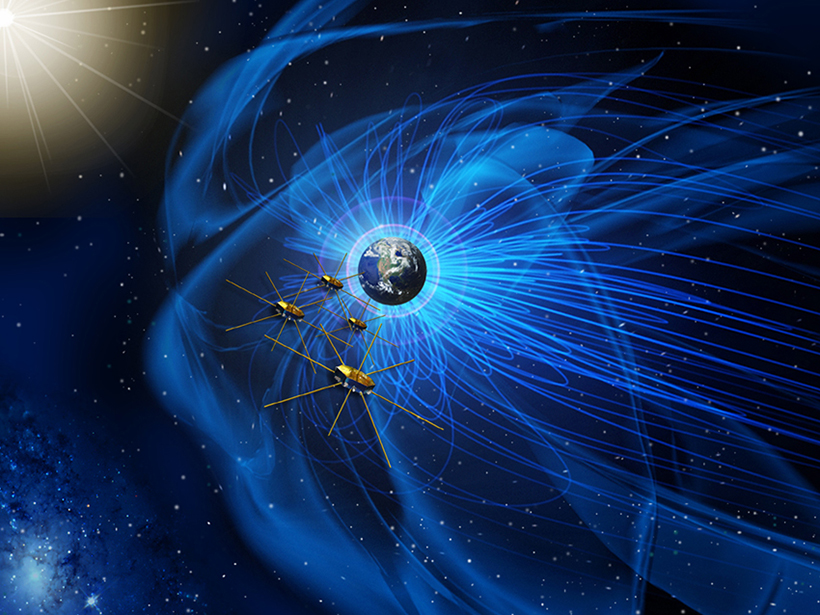Source: Geophysical Research Letters
Space envelops our planet entirely, but when it comes to space weather, a few regions are particularly important.
One of these regions is in Earth’s magnetotail roughly 160,000 kilometers above the planet’s nightside, where the planetary magnetic field is blown back by the solar wind and its field lines are stretched until they cross each other again. During geomagnetic storms, these field lines break and reconnect, releasing energy stored in the magnetic field like a rubber band snapping. These magnetic explosions blast the nightside of the Earth with radiation and charged particles, which can threaten infrastructure like satellites and power grids.
Now Li et al. have analyzed unique spacecraft measurements taken right at the tip of Earth’s magnetotail during a reconnection event. The data were collected in August 2017 by the Magnetospheric Multiscale (MMS) mission, a quartet of NASA spacecraft orbiting Earth.
During this event, MMS flew through the reconnection region traveling northward, a trajectory that gave the craft a prime view of a phenomenon known as electron meandering. In an unruffled, purely uniform magnetic field, the motion of electrons should be simple and symmetric: spiraling along magnetic field lines like beads spinning on a string.
But according to MMS data returned since its launch in 2015, electrons near reconnection sites often drift to one side of the magnetic field lines, leading to crescent-shaped electron distributions. Scientists have sought to understand the cause of this crescent signature—whether it’s related to magnetic fields or possibly a combination of magnetic and electric fields.
In the new study, the researchers found electron crescents just above and below the reconnection site, which they say are partly explained by the twisting of the magnetic field during reconnection. However, this asymmetric electron motion was found farther from the midplane of this region of the magnetotail than expected for high-energy electrons, suggesting that another mechanism is at play.
The authors single out a likely culprit: Electric fields that are induced by flowing electrons in the presence of a magnetic field. This effect—known as the Hall effect—is thought to enhance magnetic reconnection. Indeed, the stronger the electric field readings collected by MMS were, the more pronounced the crescent signature became. This finding suggests that electron crescents observed in the magnetotail are caused by a combination of magnetic and electric fields. (Geophysical Research Letters, https://doi.org/10.1029/2019GL085014, 2019)
—Mark Zastrow, Science Writer
Citation:
Zastrow, M. (2020), Deciphering electron signatures in earth’s magnetic tail, Eos, 101, https://doi.org/10.1029/2020EO140353. Published on 21 February 2020.
Text © 2020. AGU. CC BY-NC-ND 3.0
Except where otherwise noted, images are subject to copyright. Any reuse without express permission from the copyright owner is prohibited.

